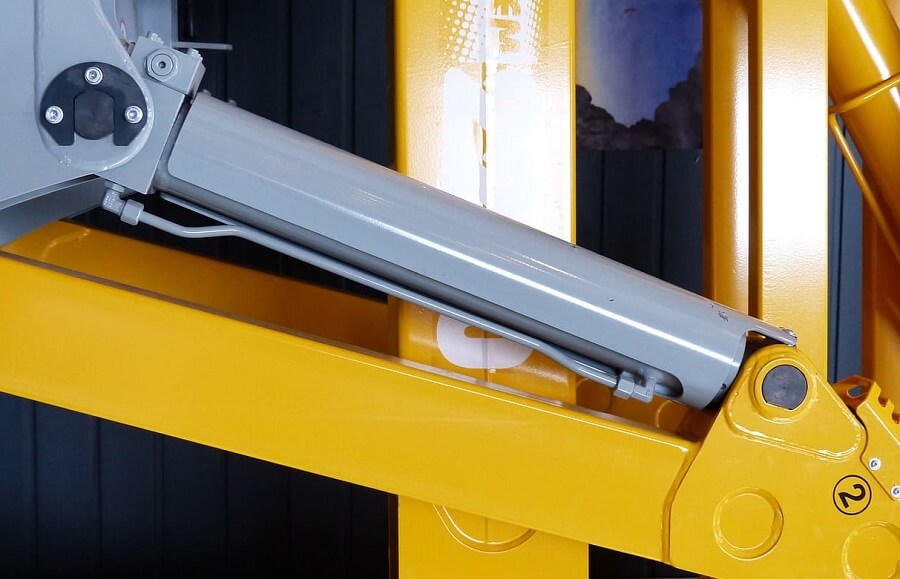Hydraulic cylinders are used in various applications that need pushing, pulling, pressing or lifting of objects that need an exceptional force. The common application that you can identify is a forklift as it uses a hydraulic cylinder to lift objects.
The major applications where you can see hydraulic cylinders are the food industry, construction projects, metal fabrication, agricultural processes and waste management industry.
They are critical to your productivity and if any of the cylinders fails to work properly, then it can greatly affect the speed and accuracy in the manufacturing of products.
Like any other machine, hydraulic cylinders also suffer from common issues that end up in repair. Some of the common issues are:
- Seal and O-Ring Wear
- Cylinder Scoring and Damage
- Contamination
- Fluid Leaks
- Misalignment or Bent Rods
Identifying the issues soon will let you repair the cylinder quickly and accurately. While repairing may seem easy, it involves a process that needs to be performed correctly for the cylinder to work again properly.
Here is the repairing process that one needs to follow:
- Initial Assessment and Diagnostics
Repairing the cylinder starts with an initial assessment. Before you open the cylinder, it’s important to know the problem. Perform proper diagnosis and determine the issue that it’s facing. Knowing the problem will give you a way to perform the right solution so that the cylinder works again properly.
After knowing the problem, clean the cylinder to remove oil, grease, and other debris that is attached to the unit. Repairing the cylinder in a clean environment will increase the chances of speed repair. Make sure the place is free from dust and moisture.
- Disassembly Process
The repair process begins with the disassembling of the cylinder. As cylinders are heavy, only experienced personnel should handle the disassembling. Any damage should be avoided so that the cost of the repair is not increased. For disassembling, heavy equipment and tools are needed so it should be done in a secure and controlled environment.
- Inspection and Component Replacement
The person who is handling the repair will then inspect the signs like fractured, glazed and swelling seals, worn-out piston rods, ballooned barrel tubes and cracked welds.
The damaged parts are then replaced by new components. The replaced parts should be sourced from a trusted dealer so that the new part does not affect the functionality of the cylinder.
- Honing and Machining
The replaced part is then checked whether it’s compatible with the other parts and whether or not it fits correctly. Honing and machining are done with high-quality standards so that the reconditioned part is working according to the standards designed by the original manufacturer.
- Sealing and O-Ring Replacement
The piston rods present in the cylinders are sealed properly and restored to the original specifications using the advanced engineering process. The right sealing process will ensure the cylinder works at its full capacity. It also ensures to lessen the cost of the repair when the sealing and replacement processes are done correctly.
- Reassembly Process
Once the replaced parts are honed and sealed, it’s time to reassemble the cylinder. Heavy equipment and high standards are used to perfect the reassembling process. You have to ensure to avoid damage as simple bumps will impede the performance of the cylinder. It can also lead to fast wear and tear resulting in more large and expensive repairs. While reassembling, you should maintain perfect cleanliness to avoid contamination.
- Hydraulic Fluid and Testing
Before you take the cylinder to do the actual work, test its performance initially. Check whether the cylinder is working at the desired pressure and to the required specifications. If the cylinder is not machined or sealed properly, it will be identified in the testing process.
- Quality Assurance and Inspection
Once the cylinder passes the testing phase, quality assurance and inspection are done frequently so that the repaired cylinder does not cause more repairs.
Preventive Maintenance Tips:
Frequent cylinder repairs can be avoided if you perform:
- Regular Inspections
- Proper Lubrication
You can also make sure to get them from the right and genuine hydraulic cylinder manufacturers so that you can get solid performance with fewer repairs. However, getting repairs is inevitable. So doing the repair in a controlled environment with a professional will make a huge difference in your budget and performance it gives.






